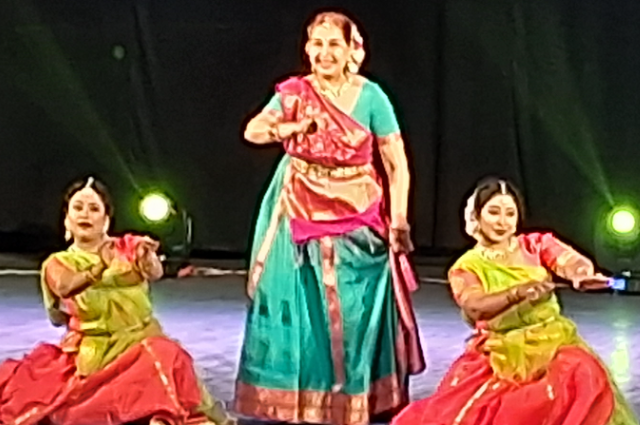
Photo by Saksham Gangwar on Unsplash
The celebrated Ananda Chandrika group presented a mesmeric performance entitled 'Jhanaka Jhanaka Baaje' by Guru Amita Dutt and Troupe at Rabindra Sadan, Kolkata, on March 8, 2025. The concept, choreography and direction were provided by Prof (Dr.) Amita Dutt, and the music was scored by Mr. Chandrachur Bhattacharjee. The dancers included Amita Dutt, Shramana Chattopadhyay, Pampa Ray Biswas, Pampa Paul, Sharmistha Chakraborty, Swarnali Moulick, Manjima Roy, Bidisha Jana, Tuli Mukherjee, Anupurba Banerjee, Aditi Ghosh, Nitya Kalyani and the disciples of Sri Aurobindo Bhavan, Rabindra Tirtha, Mukul Chhanda, Bichitrita & Nrityaashram.
The production has been supported by the Ministry of Culture, Govt. of India, La Opala RG Ltd. and K.C.Das. Rabindra Sadan, a premier cultural center in Kolkata known for its large stage and association with Bengali theatre and the Kolkata Film Festival, provided an apt venue for this classical dance presentation. The program has been open to all, and the auditorium was jam-packed with an audience representing age groups from 8 to 80 years. The performance was a tribute to the classical Kathak dance form, drawing inspiration from the iconic film 'Jhanak Jhanak Payal Baaje'.

In an interview, Prof Amita Dutta, Ex Dean & Uday Shankar Professor of Dance (Retd.), Rabindra Bharati University, Kolkata; and Guru & Honorary Secretary, Ananda Chandrika explained that " The chimes of ankle bells typically symbolize a graceful presence, joy and the resonance of movement. In fact, the reverberations of ankle bells have mesmerized Indians since ancient times. The tinkling of 'payeliya' on the feet of toddlers and the cadence of anklets of romantic heroines, the resounding 'manjira' in divine dance as well as the jingling 'ghungroos' worn by adept, professional dancers - in dream and reverie, in trance or reality - we have been kept spellbound for centuries." She further added, "this monumental presentation has been an endeavour to capture the diverse all encompassing charm of the mellifluous metal bells worn around the ankles of the performers."
The dance items presented are all anchored on recreations of timeless Hindi and Bengali lyrics composed by legends which have been set to Kathak, employing both the abstract and expressive aspects of this dance form. The songs were:
- Thumaka chalata Ramchandra by Tulsidas: Raag Mishra Gara, Dadra Taal.
- Payel ki jhankar: Raag Bageshree, Dhamar taal.
- Momer putul by Kaji Nazrul Islam: Raag Mishra Pilu, Tritaal.
- Nupura beje jai by Rabindranath Thakur: Raag Kedar, Tritaal.
- Tumi madhura ange by Atul Prasad Sen: Raag Khamaj, Dadra Taal
- Jhan jhan jhan jhan manjira by Sachin Dev Burman: Raag Nat Bihag, Tritaal.
- Jhanaka Jhanaka Payel Baaje: Raag Arana, Trital.
The evening commenced with a rendition of the titular piece, 'Jhanak Jhanak Payal Baaje', set in Raag Arana and Tritaal. This segment showcased a variety of nritta or pure dance compositions, including parans, tihais, gintis, laris, natwari bols, sawal jawab, and a tarana. The dancers exhibited rhythmic virtuosity with intricate footwork, swift pirouettes, and dynamic movements, culminating in a mesmerizing display of chakkars (spins) and tatkar (footwork).

The innovative choreography highlighted various rasas, from the sringara (romantic) in the portrayal of various emotions on stage by the dazzling performers. The ensemble of dancers delivered performances that resonated with both connoisseurs and lay audiences. Their dedication to the art form was evident in the precision and expressiveness of their movements.
In summary, 'Jhanaka Jhanaka Baaje' was a celebration of Kathak's rich heritage, blending traditional compositions with innovative interpretations, and leaving the audience with a profound appreciation for the dance form's depth and versatility.
